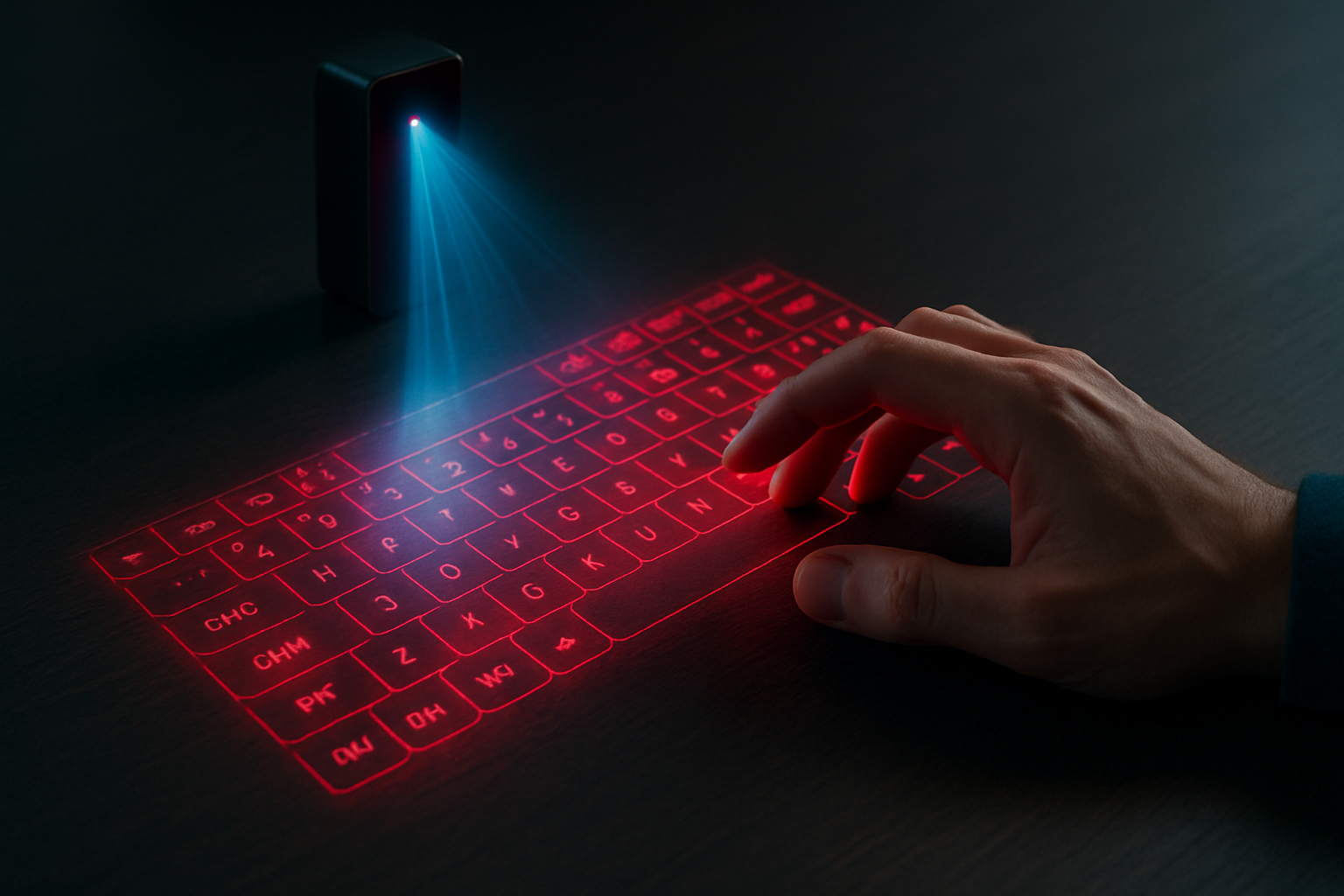Holographic Keyboards: Typing in Thin Air
In a world where technology continues to shrink and transform, holographic keyboards are emerging as a futuristic solution to our ever-evolving input needs. These ethereal interfaces promise to revolutionize how we interact with our devices, offering a glimpse into a future where physical keyboards may become obsolete. But what exactly are holographic keyboards, and are they ready to replace our trusty tactile counterparts?

The Genesis of Holographic Keyboards
The concept of holographic keyboards isn’t entirely new. The idea has been floating around in science fiction for decades, often depicted in futuristic settings where traditional input methods have been replaced by sleek, projection-based interfaces. However, the journey from fiction to reality has been a long and winding road.
Early prototypes of holographic keyboards began appearing in the early 2000s, with companies like VKB and Celluon leading the charge. These initial offerings were bulky, expensive, and often unreliable, serving more as proof-of-concept devices than practical alternatives to physical keyboards. Despite their limitations, these early attempts laid the groundwork for the more refined holographic keyboards we see today.
How Holographic Keyboards Work
At their core, holographic keyboards rely on a combination of projection technology and motion sensing. A small projector creates the image of a keyboard on any flat surface, while infrared sensors track the movement of a user’s fingers. When a finger “presses” a virtual key, the system interprets this as a keystroke and sends the corresponding input to the connected device.
The technology behind these keyboards has evolved significantly over the years. Modern holographic keyboards use advanced algorithms to improve accuracy and reduce false inputs. Some systems even incorporate haptic feedback, using subtle vibrations or sound to simulate the feeling of pressing physical keys, enhancing the user experience and typing accuracy.
The Promises of Holographic Typing
Holographic keyboards offer several potential advantages over their physical counterparts. Perhaps the most obvious is their portability. With no physical components beyond the projector unit, these keyboards can be incredibly compact, making them ideal for mobile use. Imagine carrying a full-sized keyboard in your pocket, ready to use with any compatible device at a moment’s notice.
Another significant benefit is hygiene. In a world increasingly conscious of germ transmission, a keyboard that doesn’t collect dust, crumbs, or other debris could be a game-changer in shared spaces like offices or public computer terminals. Additionally, the lack of moving parts means these keyboards are potentially more durable and resistant to wear and tear.
Customization is another area where holographic keyboards shine. Since the keyboard is projected, its layout and size can be easily adjusted to suit individual preferences or specific applications. This flexibility could be particularly beneficial for users with physical disabilities or those who require specialized keyboard layouts.
Challenges and Limitations
Despite their futuristic appeal, holographic keyboards face several hurdles before they can become a mainstream input method. One of the most significant challenges is the lack of tactile feedback. While some systems attempt to simulate key presses through haptic feedback, the absence of physical keys can make typing less intuitive and potentially slower for many users.
Accuracy is another concern. Although the technology has improved, holographic keyboards can still struggle with precise finger tracking, especially in suboptimal lighting conditions. This can lead to frustrating typos and a less efficient typing experience compared to traditional keyboards.
Battery life is also a consideration for portable holographic keyboard units. The power required to constantly project the keyboard image and process sensor data can quickly drain batteries, potentially limiting their usefulness for extended mobile use.
The Market Landscape
As the technology behind holographic keyboards continues to mature, several companies are vying for a piece of this potentially lucrative market. While exact pricing can vary widely depending on features and quality, most consumer-grade holographic keyboards currently range from $100 to $300.
Major tech companies have shown interest in the technology, with patents filed by giants like Apple and Google hinting at potential future products. However, the market remains relatively niche, with most current offerings coming from smaller, specialized companies.
The impact on the broader keyboard market remains to be seen. While holographic keyboards are unlikely to completely replace physical keyboards in the near future, they could carve out a significant niche in certain sectors, particularly mobile computing and public terminals.
The Future of Holographic Input
As we look to the future, the potential applications for holographic keyboard technology extend far beyond simple text input. Researchers are exploring ways to use similar projection and sensing technologies for more complex interfaces, including 3D modeling tools and virtual musical instruments.
The integration of holographic keyboards with augmented reality (AR) and virtual reality (VR) systems also holds promise. Imagine typing on a virtual keyboard that appears to float in mid-air, visible only through AR glasses or within a VR environment.
While holographic keyboards may not be poised to replace our physical keyboards just yet, they represent an exciting step towards more flexible and futuristic input methods. As the technology continues to evolve and overcome its current limitations, we may find ourselves increasingly typing on thin air, bringing the science fiction visions of the past one step closer to reality.





